Knock-knock.
Hear that? It’s opportunity knocking. Companies from nearly every industry are at the door waiting for your agency to open-up and show them the way with native advertising.
I sense these doors are opened far too infrequently. I find it bewildering.
I went a-Googling and entered “PPC advertising agency.” SERP results came pouring forth—both paid and organic—featuring agencies hoping to help me generated leads with PPC. I did the same thing with “social media advertising agency.” Same type of result—that service is a cinch to find.
Not so with native advertising. Not even close.
In fact, when I do the search “native advertising agency,” I find none. But I do find all kinds of news about native advertising’s growing momentum and posts about the top native advertising networks (or platforms) and relevant software solutions.
Where are the agencies? Are they shying away from native? Can someone please explain?
Interestingly, my search uncovered a brief article from Native Advertising Institute that took a crack at these questions.
38 Case Studies From Brands That Have Succeeded With Taboola
The struggle.
The article’s author, Alex Jones, writes:
“Since marketing agencies work in a fast-paced industry, you’d expect them to adapt to this trend quickly, but for some reason, native advertising appears to be an overwhelming concept.”
Jones puts forth several hypotheses about why agencies are slow to adapt native advertising:
- Agencies simply don’t know what native advertising is. Adweek reports the biggest hurdle to native advertising is simply 55% of marketers just don’t know enough what it is and how do it effectively.
- Getting it to fit alongside other forms of advertising confounds them.
- It doesn’t fit neatly into industry pricing methodologies.
- Agencies lack the time and resources to create content and track how effective it is.
Jones concludes with this advice: Just do it.
I concur. Perhaps not every agency is equipped to address and overcome these challenges, but should you decide to, doors could swing open.
The demand for native advertising.
Social ads (for the most part) are considered native advertising. Pay-per-click ads on search engines are native too. Both fit the definition:
Native advertising is a form of advertising where the ad matches the format and context of the surrounding content.
It is important to note that both of these advertising forms exist in “walled gardens.” They’re closed ecosystems in which all the operations are controlled by the operator. But not everyone is an avid social media user. Some buyers never click on search ads.
Enter native advertising for the open web, the advertiser’s route to millions of digital publications that offer content people devour. Native digital display (as it’s sometimes called) has become one of the fastest growing advertising strategies as it opens up new channels of content distribution.
“Growth of native digital display is being driven by publishers’ pursuit of higher-value and more mobile-friendly inventory, as well as by advertisers’ demands for more engaging, less intrusive ads.”
Lauren Fisher, analyst, eMarketer
A recent MediaRadar report attests to the effectiveness of native with native advertising statistics that claim it’s more trustworthy and engaging than traditional forms of advertising and produces higher click-through rates (CTR) and sales. In fact, native display ads produce CTR 8.8x higher than typical display ads.
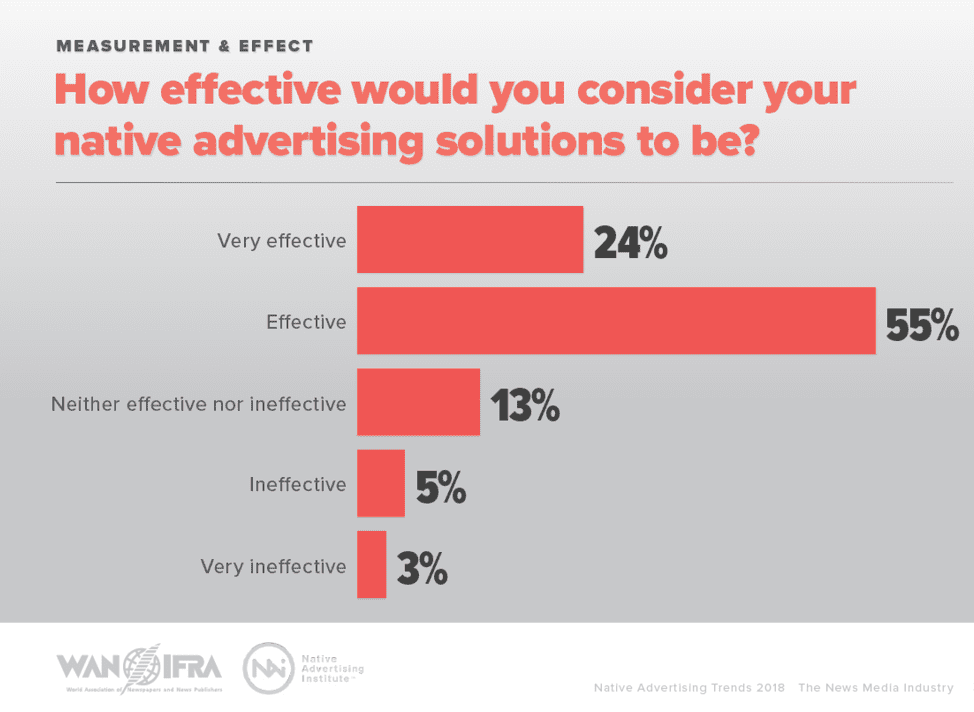
The 2018 report also forecasts that the percentage of publisher revenues from native advertising will grow to 36% in 2021. Ask publishers and you’ll find native advertising is important or very important to 95% of them.
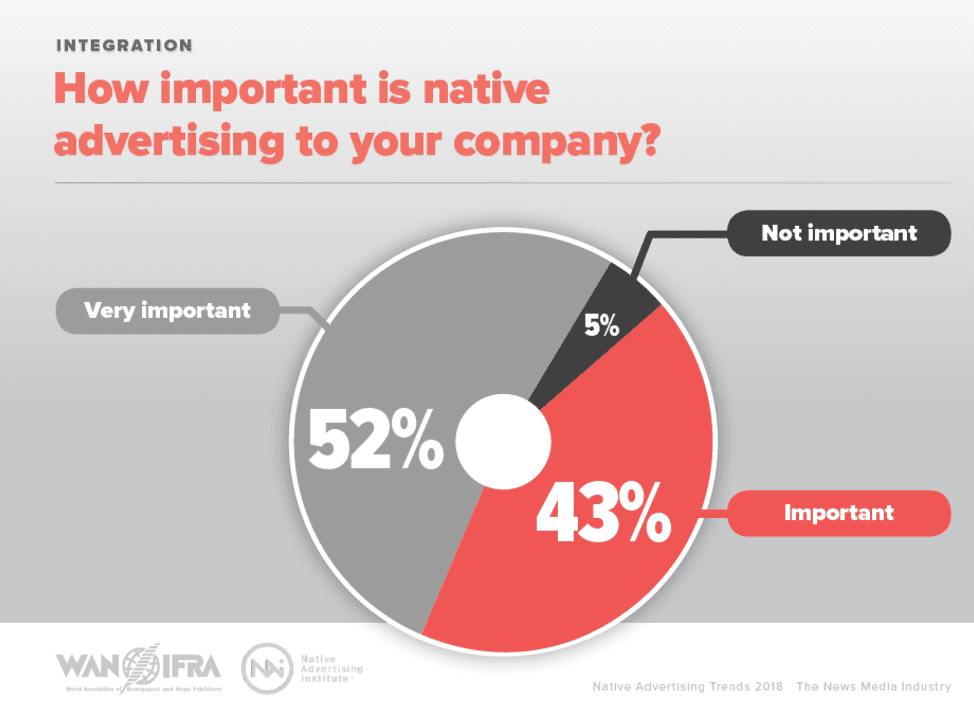
Native advertising types.
I’m not sure there’s a definitive guide to the types of native advertising that exist, but let’s not make it complicated. An ad is considered native when it matches the format and context of its surrounding content, so the types of advertising considered to be native evolve along with the evolution of media.
Still, if you want to separate your agency from the pack by managing native advertising on behalf of your clients, you’re bound to find the following list of popular types helpful.
In-feed units.
In-feed units, as seen on social media, appear in the same feed as the other content but are distinguished by an advertising label. Versions of in-feed units include:
- Ads that send clickers to a brand’s editorial content or landing page.
- Ads that are a part of a publisher’s normal content stream that send clickers to a page within the site. Often, the content is created by or in conjunction with the publisher.
- Another type of in-feed as displayed within the publisher’s content stream but can be read or played without leaving the page.
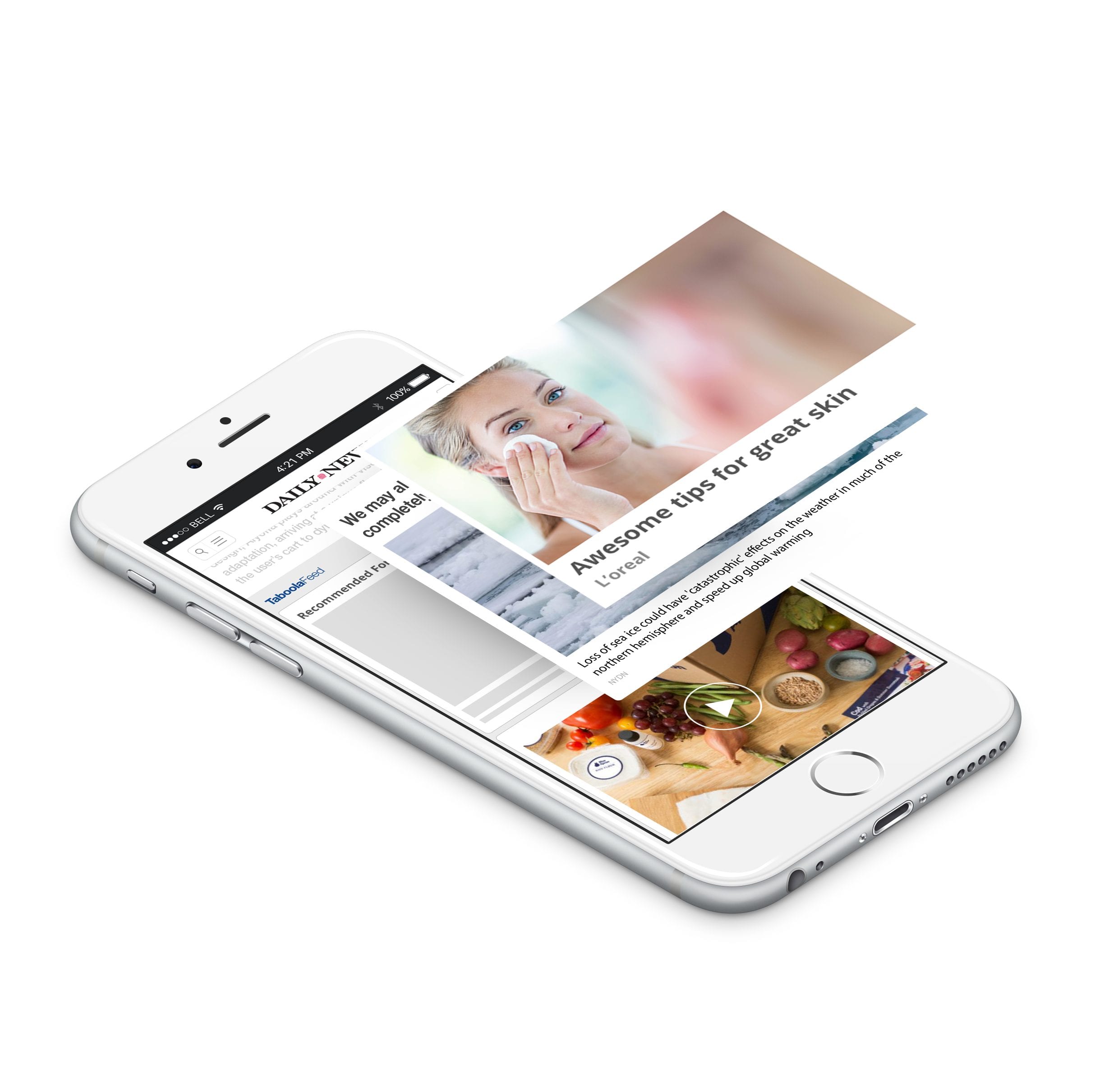
Recommendation widgets.
Recommendation widgets suggest sponsored content underneath or alongside content. The ads appear in-stream but don’t have the exact same appearance as an editorial content feed. Upon clicking. users are sent to a page on the site of the brand who created the ad.

Paid search
Search engine marketing is an established form of native advertising. Users are presented with the ads when they conduct a search. Native search ads resemble organic search results but are labeled as ads.
Paid social
In-feed social media ads are simply sponsored posts though variations exist across the popular social sites.
Promoted listings
Promoted listings appear on sites that don’t offer editorial content but match the other products or services there.
Custom
Some native ads don’t fit neatly in any of the above categories because they are more customized. With custom content, the advertiser and publisher collaborate to make websites or pages with content that users might find relevant. Many publishers have dedicated editorial teams that create this type of content for advertisers.
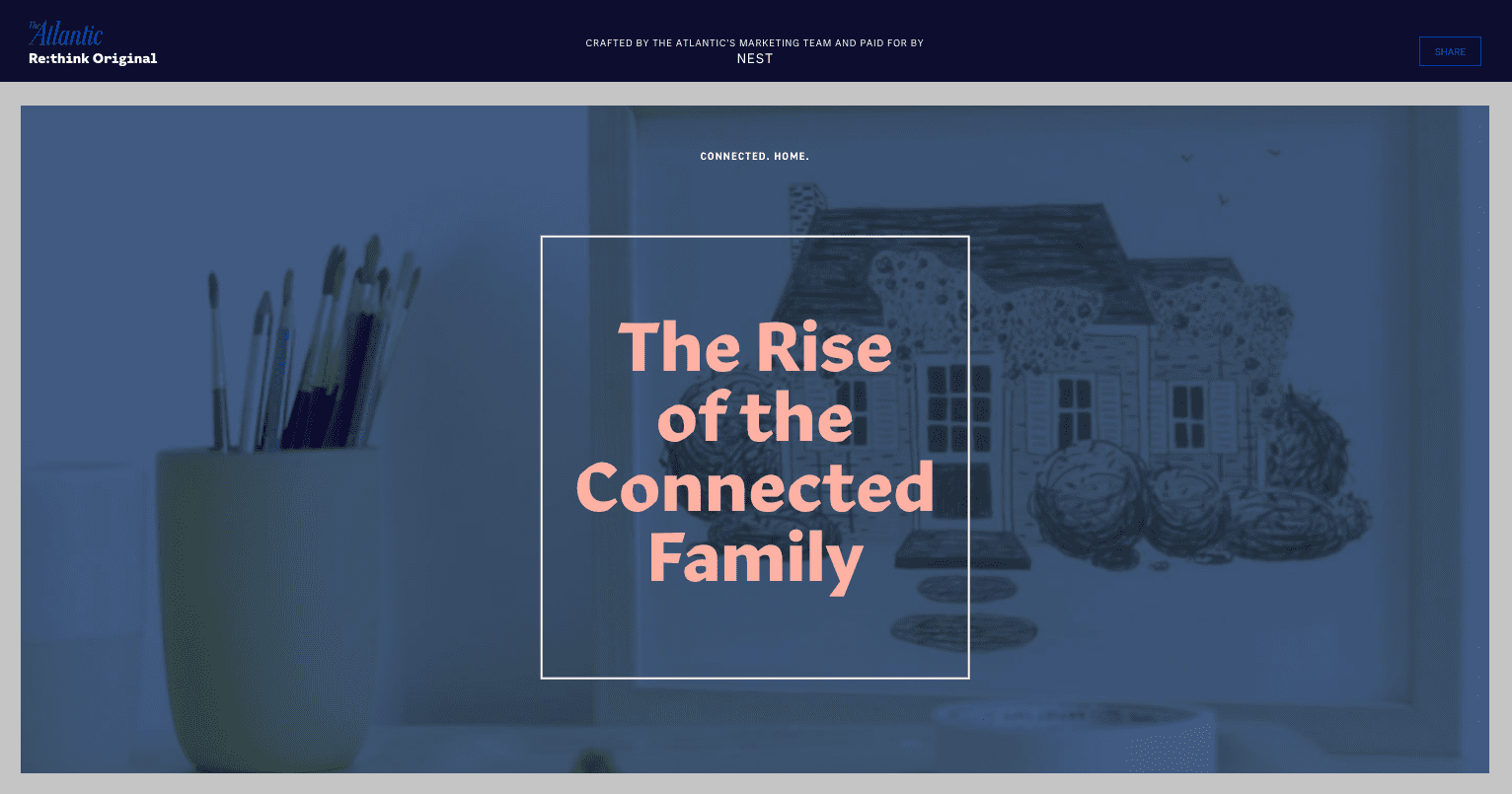
Here’s an example of a co-branded article from The Atlantic and Nest about the rise of connected homes and their effects on families.
It’s time to offer native advertising services.
Last year, Chad Pollitt, a founding partner of the Native Advertising Institute, claimed he knew of only seven agencies specializing in native advertising. In his post, Making the Case for the Native Advertising Agency in 2018, he writes:
“The demand for native agency services is real and it’s mostly being served in the most gracile way by the paid Facebook gal sitting in the corner of a PPC or marketing agency.”
Pollitt claims agencies don’t tackle native out of fear.
It’s time to get off the dime. The demand is real.
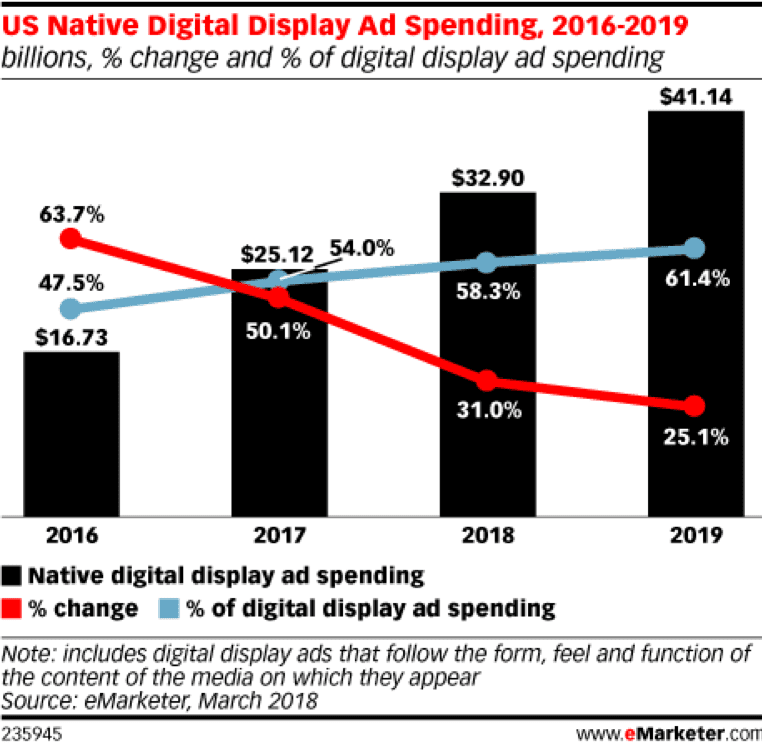
Native advertising now accounts for more than half of all digital display spending by US marketers.
Help your clients embrace and execute this strategy.
Step 1: Learn how to build native campaigns.
Ok, this is an obvious one. You need to know how to create and run native campaigns before you can offer them to brands. And there’s a wealth of resources you can use to get up to speed.
To start, check out The Beginner’s Guide to Native Advertising. This lays out the basic definition of native advertising—a form of advertising where the ad matches the format and context of the surrounding content—the big players in the field, and the terminology you need.
But before you get wrapped up in that, let’s break down the different stages of running a native-advertising campaign and creating a native advertising strategy:
Choose your platform.
First, you need to choose where to launch your native ads. These are the major distribution channels:
- Social: In-feed ads and sponsored content that look like regular social posts on platforms like Facebook, Twitter, and Instagram—and don’t disrupt the user’s scrolling experience.
- Search: Pay-per-click ads that show up within organic search results on Google, Yahoo!, or Bing, etc.
- Open web: Digital display ads that show up on a publisher’s website, such as through recommendation widgets that suggest relevant articles to read on third-party sites.
These are all valid options for distribution channels, but keep in mind that social and search operate in walled gardens. They limit your reach to users on their networks, and each platform has its own unique metrics and audience data. Conversely, on the open web, you can use a content discovery platform like Taboola to reach readers across millions of publishers’ sites and collect unified data from all of those touch points.
Pick your content format.
Your ads will take different forms depending on the platform(s) you choose. On a social platform, such as Instagram for instance, you can choose from landscape or portrait photos, 60-second videos, carousel photos or videos series, and Instagram Stories ads.
Target, for example, launched this in-feed Instagram ad with a carousel of videos.
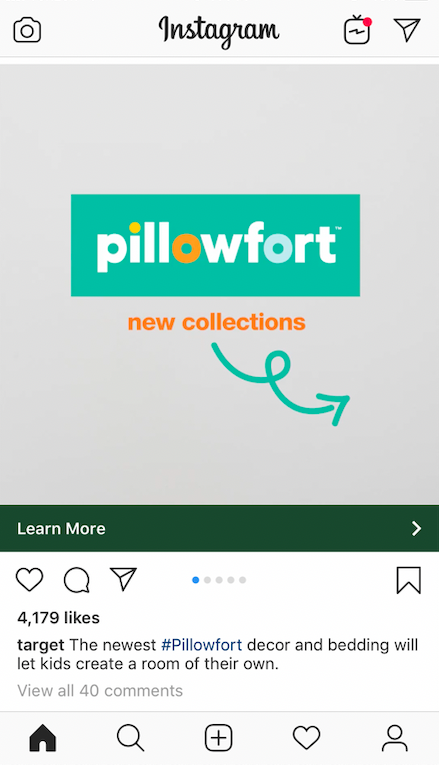
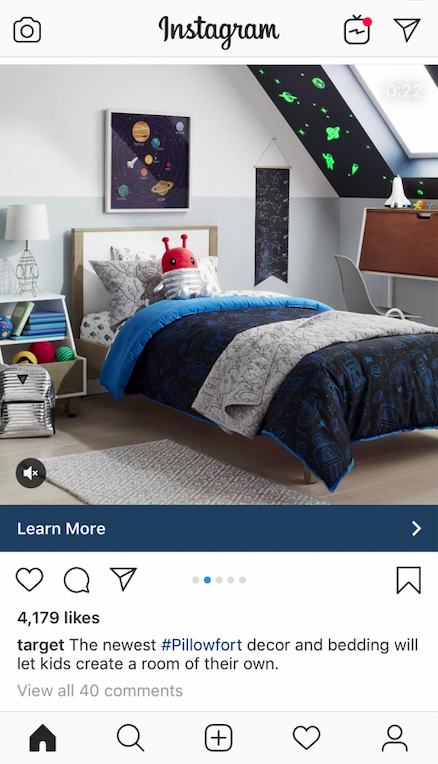
On an open web platform, such as Taboola, you can offer links to recommended articles or videos that display with a thumbnail and headline. And these are distributed below articles on premium publisher sites where you know your target audience is already reading and engaged. These ads put you in the perfect position to drive traffic to your website, generate leads, and spread brand awareness.
Just look at these technology ad placements on NBC News:
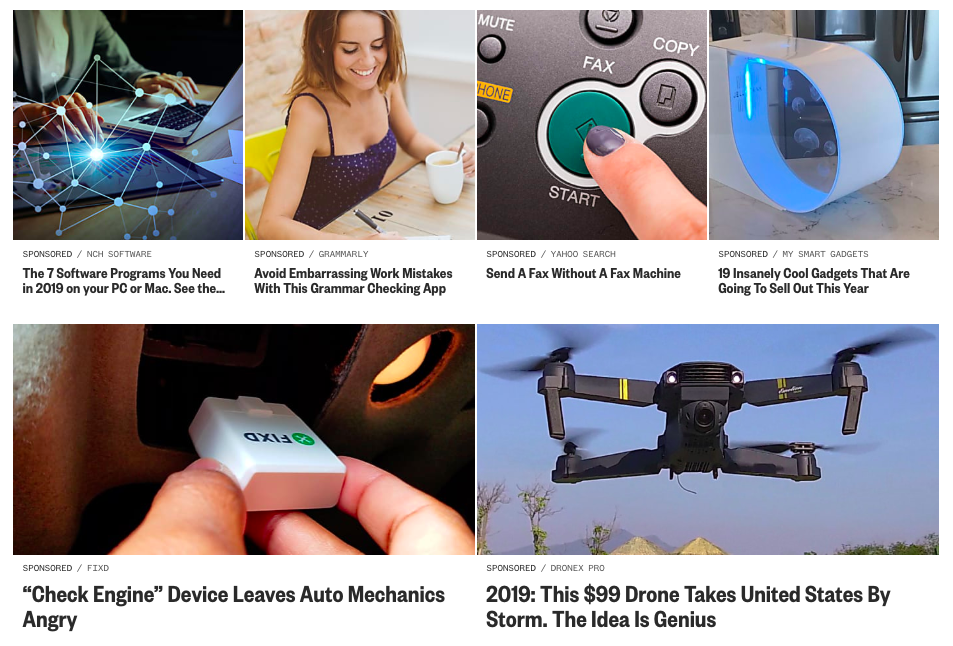
When choosing your content format, you may want to consult the IAB’s recognized types of native ad units. If you’re looking to jump between platforms, you can also use helpful hacks—like this one for converting Facebook ads to open web ads.
Target your audience.
Most platforms—social, search, and open web or native—let you target audiences with categories such as location, device, age, gender, and interest. Consult each platform’s offerings and your client’s goals before choosing your specific audience.
On social, for instance, you’ll probably work with audience data from one specific platform. So you might run a Facebook ad that targets Facebook users who are women aged 18-35 with an interest in fashion. Meanwhile, on native platforms like Taboola, you can use your own data along with audience data from millions of top publications, casting the widest and most engaging net possible.
Remember also to pair your audience’s interests with your ad content. The more relevant your messaging is, the more likely you’ll be to drive engagement.
Step 2: Motivate clients to try new channels.
There are plenty of reasons for brands to venture into new advertising channels, but sometimes you need to lead them in the right direction.
You can tell clients that consumers have become ‘adlergic‘, for instance.
Ok, you don’t have to use that term, but you can make it clear that people are getting tired of in-your-face, disruptive ads, and will be more receptive to native ads that seamlessly blend into the user experience.
26% of US internet users have ad blockers in place, meaning those traditional banner and display ads won’t even cross their paths.
Clients may also be frustrated by saturated markets and decreased organic reach on social media. Consumers are also losing trust in social platforms and their ads, especially after recent data breaches and privacy concerns have come to light.
Open web native ads, on the other hand, exist outside of those tainted arenas. They open up opportunities to build trust and engagement among audiences fed up with traditional and social advertising.
Step 3: Have examples at the ready.
Your client will take comfort in knowing they’re not the first to try—and succeed—at native advertising. Many have come before them and led the way with standout campaigns.
That’s why you’ll want to have a list of examples to show them. Take our Taboola case studies page, it’s full of real-life stories about how agencies, publishers, and advertisers drove tangible results from their native-advertising campaigns.
One agency, for instance, was helping a major US finance brand expand its reach and find new placements for its content. Taboola provided access to exactly what they were looking for: high-quality publisher sites where they could promote their educational video series and engage new customers.
As a result, the agency achieved an 80% viewability rate, a 70% completion rate, and a 15% decrease in CPM for the video campaign.
Step 4: Incorporate native ads into the funnel.
Native ads don’t exist in a vacuum. You shouldn’t have to feel like you’re forcing them into your offerings or your client’s marketing funnel.
The good news is that native advertising fits into any stage of the funnel. Here’s how:
- Brand awareness: Expand your audience reach by sharing photos, videos, and articles to millions of social users, Google searchers, and readers across the web. It’s important to note that all three native ad platforms—search, social, and open web—can help you generate brand awareness.
- Consideration: Build brand recognition and remain top-of-mind by retargeting customers who’ve already interacted with your brand and reach them with content that’s relevant to their interests. You can use retargeting tools on social, search, and open web platforms to help you reach people again.
- Decision: Generate leads via email signups and product page visits by linking people back to your website. This way, you get prospects one step closer to finishing the sale. When it comes to driving customers to the bottom of the funnel, search and open web ads are your best bet.
- Purchase: Drive those conversions with specific calls to action, reach people with the right message at the right time—when they’re ready to buy.
By harnessing the power of native advertising, your agency can build robust strategies for any stage of your client’s marketing funnel.
Step 5: Know the resources you’ll need.
You and your client must collect and choose the resources you need to build your native ads.
These are the three main types of resources you’ll want to get a hold of:
- Images: These can include product images, stock images, or thumbnails from articles and videos that catch the user’s eye. For guidance, check out this post: How to Find Images and Media for Your Digital Ad Campaigns.
- Articles: Native advertising provides a great opportunity to promote specific articles to new audiences. Which articles perform best among niche communities? Which are best for building brand awareness, educating prospects, or entertaining readers? Use this data to select and target your articles most effectively.
- Videos: Video is the talk of the marketing industry. Eighty-one percent of marketers used video in 2018 and 87% of consumers say they’d like to see more video from brands this year. With video, you can break down complex ideas into visually engaging content, tell stories quickly, and build dynamic viewing experiences for your audience. Taboola even provides video customization services to help you drive ROI using creative best practices.
When considering which content to use, remember always to provide value to your target audience. Keep in mind which products they’re interested in, which devices they use, and how they prefer to consume content. For more, head to this post: How to Create Genuine Native Advertising Content.
It’s time to win clients with native advertising services.
Create a thought leadership position
First-time native advertisers are bound to take a DIY approach. They may struggle. Or they may get no further than conducting research.
Be there for them. Become an advocate and advisor on the topic of native advertising. Establish yourself as a native advertising thought leader by:
- Writing and curating content about the industry on your blog.
- Finding opportunities to contribute guest posts about the topic.
- Joining social media conversations about the topic.
- Offering webinars or mini-courses.
- Telling success stories about native advertisers.
- Presenting relevant content at industry conferences.
- Having your in-house expert(s) appear on podcasts and/or create videos.
Help your clients help you
Agency leaders are apt to claim the lion’s share of their new business comes from client referrals. Obviously, referral business comes without intentional investments in new business development and the built-in trust factor makes leads more likely to come aboard.
The best way to help clients help you land clients for your native advertising offerings is to educate them.
- Create helpful content on the topic and make sure it’s seen by the right people.
- Bring aboard a beta client for no or low fees willing to participate in a customer success story.
- Offer incentives to clients to refer your agency.
Build an employee advocacy army
Every employee, from the top down, should perform the role of ambassador for the agency. Develop internal programs and processes such that employees gain a solid understanding of your new service and put the word out about it every chance they get.
- Train employees to use social media and get them excited about doing so.
- Provide an incentive to land leads.
- Encourage them to attend industry events and network on behalf of the agency.
Take your case to the right prospects.
In the early going, focus on existing clients that are the right fit for native advertising. Such clients may:
- Be avid content marketers struggling to generate new traffic and leads with social and other organic means.
- Have established budgets for search and social advertising and be willing to experiment with native.
- Be seeing results for traditional advertising and marketing tactics steadily diminishing.
- Be Competing in markets in which native has proven to deliver results.
Talk up performance marketing
Your clients want transparency through and through and you can deliver it. Performance marketing pros rely heavily on paid marketing channels and get paid to, well, perform.
Like most search and social advertising programs, fees for the native advertising from Taboola, the leading content discovery platform, are based on cost-per-click. You’ll have instant access to the data you need to gauge results and deliver unabashed honesty at every point in the process.
Run native ads
Practice what you preach. Create native advertising programs to promote your services on relevant sites, in the right social streams, and to real prospects. Imagine the great conversation you can have with a prospect that comes to you by way of sponsored content they found on an online publication about advertising and marketing.
I don’t want to tell you what to say, but some form of “it works” might be wise.
Profile native advertising campaigns
In a post on the Native Advertising Institute blog, Johanne Eliasson interviews Evie Kevish of Shaw Media Marketing, who found that the best way to sell native advertising is by showing clients examples of successful campaigns.
It makes perfect sense. Many brands still don’t have a good grasp of what native is, what it looks like, and how it works.
One, two, three… and your business expands
A quick review here:
- The demand for native advertising is high. The number of agencies that offer specific native advertising services is low.
- Native advertising continues evolving, both in “walled garden” media and the open web. Advertisers need help taking advantage of native.
- There are many ways to position your agency as an expert in native advertising.
Ready?